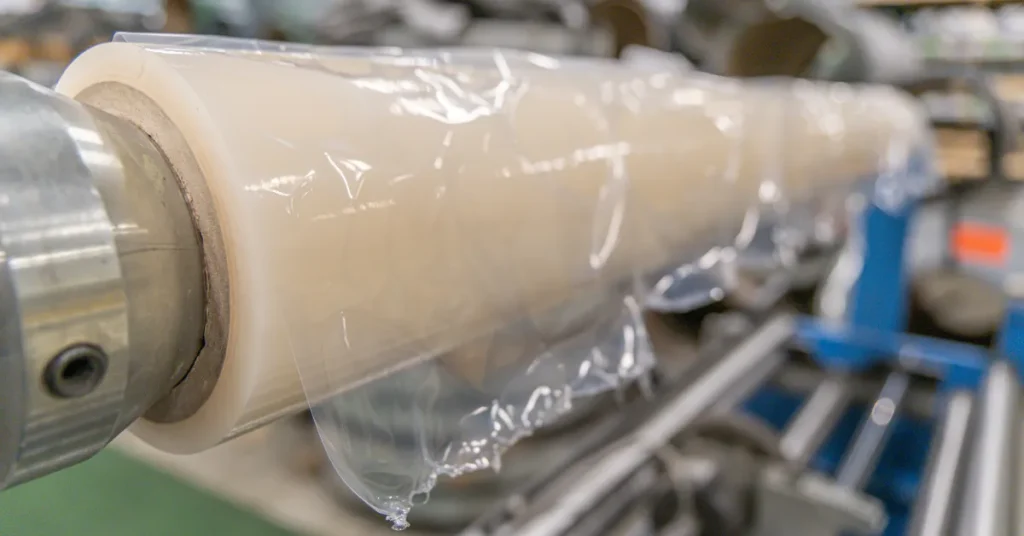60 mil is equivalent to 1.524 millimeters. This measurement represents a thickness often used in various materials.
Understanding the conversion of mil to millimeters is crucial for industries ranging from construction to manufacturing.
For those seeking materials with specific thickness metrics, 60 mil offers a substantial degree of thickness without being excessively bulky.
This unit of measure is particularly common in the United States, where the “mil” traditionally denotes a thousandth of an inch.
Consequently, accuracy in converting mils to millimeters is essential for professionals in disciplines where precise measurements are the cornerstone of quality and compliance.
This level of thickness is typically associated with heavy-duty applications, offering a balance between durability and flexibility that is suitable for a range of products, including roofing materials, pond liners, and various types of sheeting.

Grasping The Mil Measurement Unit
When discussing material thickness, “mil” often causes confusion. Not to be confused with millimeters, a mil is a different unit of measurement. Let’s demystify this unit to understand how thick 60 mil really is.
The Basics Of The Mil
One mil represents one-thousandth of an inch. To picture this, imagine a dime’s thickness, which is about 49 to 55 mils. 60 mil, therefore, is slightly thicker than a dime. It’s a practical measurement for items like plastic sheeting or coatings.
- Simple calculations: Multiply mils by 0.001 to convert to inches.
- Usual usage: Often seen in construction and manufacturing.
Comparing Mils To Other Units
Understanding mil in relation to other units of measure helps. Here’s a simple comparison:
| Mil | Inches | Millimeters |
| 1 Mil | 0.001″ | 0.0254mm |
| 60 Mil | 0.060″ | 1.524mm |
It’s vital to note that:
- A mil is not a millimeter.
- 1 mil = 0.001 inches or 0.0254 millimeters.
- 60 mils is thicker than most credit cards.
The Real-world Scope Of 60 Mils

Understanding the thickness of materials is crucial in various contexts. People often talk in abstract terms, such as mils, without knowing what it means in real-world applications.
The thickness of 60 mils, although seemingly insignificant, plays a vital role in everyday products and industrial uses. Let’s dive into how 60 mils translates to objects and materials that we encounter daily and in specialized settings.
Examples In Daily Life
Everyday items often need specific thickness for durability, function, or safety. Identify 60 mils around the house to better understand this measurement.
- Credit cards are roughly 30 mils thick, so imagine two stacked together.
- Smartphone screen protectors vary in thickness but can approach the 60-mil mark.
- Our home’s insulation might feature a vapor barrier that’s around 60 mils thick.
Industrial Applications Of 60 Mil Thickness
Industries require precise measurements for material strength and integrity. The thickness of 60 mils is ideal for various applications:
| Industry | Usage |
| Construction | Roofing membranes and liners |
| Automotive | Underbody coatings |
| Manufacturing | Heavy-duty equipment seals |
Consider the robust protective layer on a truck bed liner; this necessary shield is often 60 mils thick to prevent damage.
Conversion: From Mils To Millimeters And Inches
Understanding how to convert mils to millimeters and inches is essential. A mil is a measurement unit used primarily in manufacturing and engineering. The term “mil” is short for “milli-inch” or a thousandth of an inch.
One mil equals 0.001 inch. With 60 mil being a common thickness for various materials, it’s important to know how that translates to more commonly used measurement units.
Step-by-step Conversion Guide
To convert 60 mils to millimeters and inches, follow these simple steps:
- Remember the Basics: 1 mil is 0.001 inch.
- Convert Mils to Inches: Multiply the number of mils by 0.001.
- For 60 Mils: 60 x 0.001 = 0.060 inches.
- Convert Inches to Millimeters (1 inch = 25.4 millimeters).
- For 0.060 Inches: 0.060 x 25.4 = 1.524 millimeters.
Conversion Charts For Quick Reference
Keep this conversion chart handy for a quick reference:
| Mils | Inches | Millimeters |
| 10 | 0.010″ | 0.254 mm |
| 20 | 0.020″ | 0.508 mm |
| 30 | 0.030″ | 0.762 mm |
| 40 | 0.040″ | 1.016 mm |
| 60 | 0.060″ | 1.524 mm |
| 80 | 0.080″ | 2.032 mm |
Measuring Techniques For Thickness
Understanding material thickness is crucial in many industries. When it comes to measuring thickness in mils, precision counts.
A mil is one-thousandth of an inch. 60 mils means 60 thousandths of an inch. Here, we explore techniques to measure this thickness reliably.
Tools For Measuring Mils
Several tools can measure the thickness in mils:
- Micrometer: A precision tool that offers high accuracy.
- Caliper: Handy for quick, reliable measurements.
- Thickness gauge: Dedicated device for material thickness.
Choose the appropriate tool based on the material and required precision.
Accuracy And Precision In Thickness Measurement
Close attention to detail enhances measurement accuracy:
- Zero the tool: Before measuring, reset the tool to base.
- Apply consistent pressure: Use steady force for even readings.
- Repeat: Measure multiple times to verify results.
Documenting the method used ensures consistent and accurate measurements.
Material Considerations At 60 Mil Thickness
Understanding the unique characteristics of materials at 60 mil thickness is essential. This measurement equates to 60 thousandths of an inch, or approximately 1.52 millimeters.
It’s a common standard for products that require robustness and durability. Knowing the properties of various materials at this thickness helps in selecting the right one for specific applications.
Strength And Durability Factors
Materials with 60 mil thickness come with increased strength and longevity. Thickness directly influences performance under stress and resistance to wear and tear.
This attribute is crucial for materials used in construction, waterproofing membranes, and heavy-duty protective gear.
- Resistance to Punctures: Thicker materials are less susceptible to being punctured, a critical feature for high-impact environments.
- Durability: A 60 mil barrier withstands physical pressures, reducing the need for frequent replacements.
- Tensile Strength: High tensile strength is a hallmark of this thickness, allowing materials to resist stretching and tearing forces.
Impact On Insulation And Protection
At 60 mils, materials not only provide strength but also enhance insulation and protection. This contributes to energy efficiency for insulation applications and adds an extra layer of defense against environmental elements.
| Material | Insulation Benefits | Protection Qualities |
| Rubber | Excellent thermal retention | Weather and UV resistant |
| Plastic | Reduces thermal bridging | Chemical and corrosion resistance |
| Metal Foil | Reflects heat effectively | Acts as a barrier to moisture and gases |
Ensuring the right balance between thickness and material qualities is paramount.
A 60 mil thick material can provide superior insulation, reduce energy costs, and protect against hazards. Consequently, its applications are diverse and critical across various industries.
Common Misconceptions About Mil Thickness

When talking about material thickness, “mil” often leads to confusion. People confuse it with “millimeter”.
It’s important to clarify common misunderstands about mil thickness. Misjudging this tiny unit could mean big differences in projects, from construction to home crafts.
Myth-busting: Mil Vs. Millimeter
Many think a mil equals a millimeter. This is wrong. A mil is not a shortened version of millimeter.
A mil is 0.001 of an inch, or one-thousandth of an inch. In contrast, a millimeter is a metric unit. It equals 0.03937 inches. This might seem a small difference, but it matters a lot.
Clarity On Thickness In Industry Standards
Different industries follow their own standards. For example, in plastics, thickness is in mils. In engineering, it’s millimeters.
Knowing the correct unit is crucial. For instance, 60 mil is 1.52 millimeters.
| Unit | Mil | Millimeter |
| 1 Mil | 0.001 inches | 0.0254 millimeters |
| 60 Mil | 0.06 inches | 1.52 millimeters |
Check units carefully when purchasing materials. A small mistake can cause a big problem.
FAQs About How Thick Is 60 Mil
How Thick Is 60 Mil Plastic?
60 mil plastic is equivalent to 1. 5 millimeters in thickness.
How Do You Calculate Mil Thickness?
To calculate mil thickness, divide the object’s thickness in inches by 0. 001 or use a micrometer to measure it directly in mils.
How Thick Is 55 Mil?
55 mil is equivalent to 0. 055 inches or 1. 397 millimeters thick. This measurement often applies to materials like plastic sheeting or coatings.
How Thick Is 90 Mil?
90 mil is equivalent to 0. 090 inches or approximately 2. 29 millimeters in thickness. This measurement is often used in reference to materials like plastic sheeting.
Conclusion
Understanding the thickness of a 60 mil material is key for various projects. We’ve dissected its thickness equivalent, about 1. 5mm, and its usage across industries.
This knowledge ensures you choose the right material for your needs. Remember, precision in measurements leads to project success.
Keep this guide handy for your next endeavor.
Resources:
1. https://www.fdot.gov/docs/default-source/programmanagement/Implemented/SpecBooks/January2016/Files/451-116.pdf
